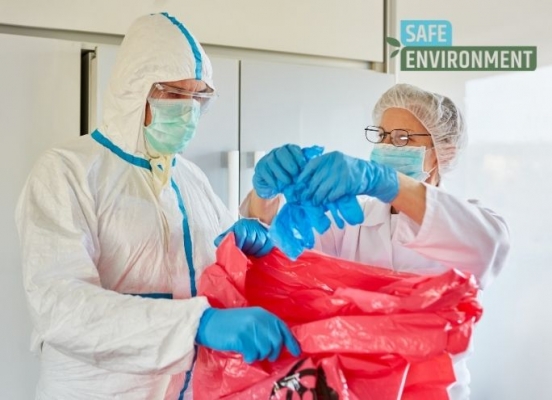Hospital Liquid Waste Management
Have you ever thought about how healthcare facilities in your area dispose of liquid medical waste? There’s little question that liquid waste management in any medical facility – primarily hospitals – poses challenges. The challenges aren’t only relegated to actual disposal, but the way to contain its supported type.
The liquid medical waste treatment is not just limited to the disposal – it’s also about staff safety. The fines and penalties related to non-compliance are massive, not to mention the damage to the hospital’s reputation! Hospital facilities need to employ effective methods of liquid waste disposal. There are different types of medical liquid and all sorts of fluids require healthcare waste management, segregation, and liquid disposal procedures. Some of the liquid wastes hospital employees encounter include:
1. Dialysis waste
2. Lab cultures and specimens
3. Chemotherapy drugs and other liquid medications
4. Spinal fluids
5. Blood and blood by-products
6. Amniotic fluids
7. Several bodily secretions and fluids
How does one obtain it all? What about collection processes? What about safety? Fluid medical waste can and does spill. It’s going to be even more infectious. Specific protocols and personal protective equipment (PPE) is required to wash up a medical spillage. Fluid medical waste is hazardous and infectious. Such waste has various pathogens, including HIV, hepatitis B, or viruses. Some fluids, including chemotherapy drugs and medications, are classified as biohazard waste by the Resource Conservation and Recovery Act (RCRA) legislation. Each type of medical requires specific methods and regulations about containment, storage, labeling, and disposal. Biomedical waste management is a must.
It is better to be safe than sorry. The bulk of liquid medical waste gathered in a hospital environment is classified as regulated medical waste. In a compliant hospital environment and other medical facilities, liquid medical wastes are typically segregated and placed in a specifically designed and labeled container that’s designed to contain liquid and is puncture-proof, leak-proof, and spill-proof.
Proper packaging and labeling of waste are of key importance. Potentially infectious liquid medical waste must be packaged differently than ‘regular’ and non-infectious liquid waste.
It is often time-consuming, frustrating, and expensive to dispose of liquid waste from a hospital. However, there are certain things that hospital employees should never, ever do with liquid waste because they are often dangerous, like “pouring it down the drain”.
The handling, packaging, containing, and disposal of liquid medical waste in a hospital environment ranges from operating suites to patient rooms. The disposal of fluid medical waste from an operating suite should be efficient, compliant, cost-effective, and at the same time, it should protect all members of the medical aid team from exposure to dangerous viruses or bacteria and blood-borne pathogens.

